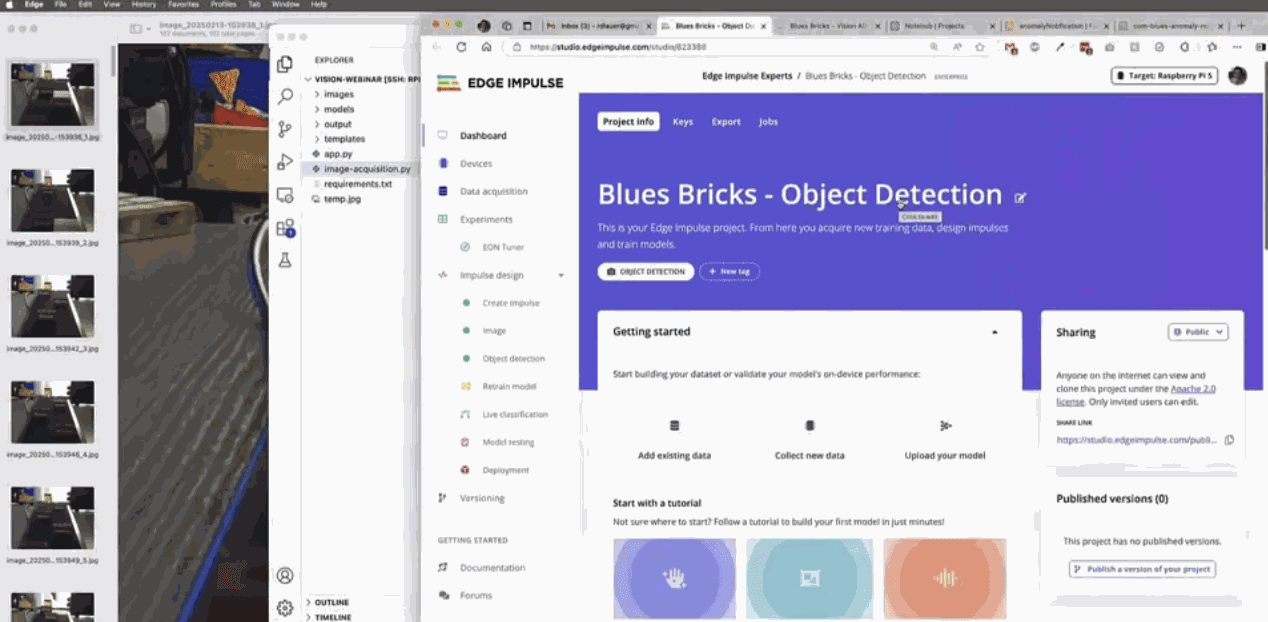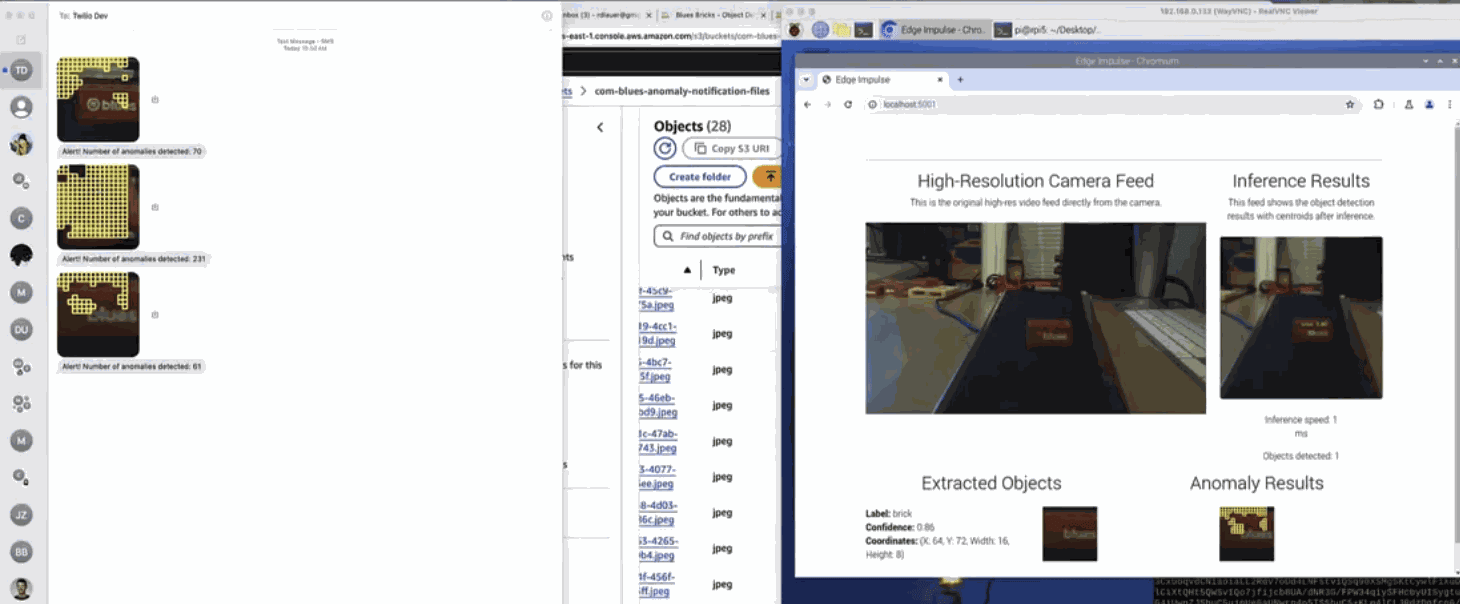Webinar Summary
The following summary is auto-generated from the webinar recording.
Welcome to our exploration of implementing vision-based Edge AI solutions in legacy industrial environments. In this blog post, we’ll walk through how to create a robust anomaly detection system using Edge Impulse and Blues, along with a Raspberry Pi 5. We aim to inspire you to envision how you might modernize your existing practices through this innovative technology.
Introduction to Edge AI
Edge AI refers to the use of artificial intelligence algorithms and models directly on edge devices. This approach allows for real-time data processing and decision-making without the need for constant cloud connectivity. Today, we’ll focus on how Edge Impulse simplifies the model creation process for various scenarios, especially in industrial settings.

Challenges in Integrating AI into Legacy Systems
Integrating modern vision-based ML solutions into legacy environments can be quite challenging. Here are some of the key issues:
- Complexity of Model Development: Creating valid and robust ML models for legacy systems is not straightforward.
- Hardware Limitations: Retrofitting legacy machines requires scalable hardware solutions without voiding warranties.
- Connectivity Constraints: Traditional IT networks can be restrictive, making it hard to provision Wi-Fi access for security reasons.
Addressing the Challenges
We will demonstrate how to use the Blues Notecard for secure real-time data syncing via cellular, eliminating local IT network restrictions. Additionally, we will introduce a new Notecard cellular option that offers higher bandwidth capabilities at a lower cost.
Creating an Anomaly Detection Model
We'll start by building an anomaly detection model using Edge Impulse. The process begins with data collection, which is essential for any machine learning project.
Data Collection
Collecting a custom dataset is the first step in developing our ML model. For example, if we were manufacturing a specific product like a toy, we would need images of the perfect product to train our model on defect detection.
Model Building and Training
Once we have our dataset, we can create an impulse in Edge Impulse Studio, which represents our machine learning pipeline. This includes:
- Data preprocessing
- Feature generation
- Training the model
- Testing the model's accuracy
The model will be trained on the images we collected, allowing it to learn to identify anomalies in new data.

Deploying the Model
To deploy the model, we will use a Raspberry Pi 5 along with a new midband LTE Cat-1 bis Notecard. This combination allows for secure cloud access while simplifying the hardware setup.
Integrating with AWS and Notifications
Using the Blues Notecard, we will integrate with AWS to send alerts via SMS and email when anomalies are detected. This will involve setting up a new project in Not Hub and configuring routes to AWS.
Demo: Real-Time Anomaly Detection
Now, let's dive into the demo. We will set up a miniaturized industrial conveyor belt using Raspberry Pi 5 and Blues-branded bricks. The goal is to identify defects in the bricks as they move down the assembly line.
Step Zero: Identifying the Problem
The first step is to detect bricks on the conveyor belt. We will build an object detection model using Edge Impulse Studio, supplying it with numerous images of bricks.
Step One: Detecting Anomalies
Next, we will create a visual anomaly detection model. This model will identify defects in the bricks by analyzing images captured during production.
Step Two: Real-Time Analysis
The Raspberry Pi will process the images in real-time, identifying any anomalies and sending alerts via SMS and email when defects are detected.

Conclusion
In this webinar, we explored how to build a vision-based anomaly detection system using Edge Impulse and Blues. By leveraging the capabilities of the Raspberry Pi 5 and Blues Notecard, we can create a robust solution for identifying defects in legacy industrial environments. This approach not only modernizes existing practices but also enhances product quality and operational efficiency.
